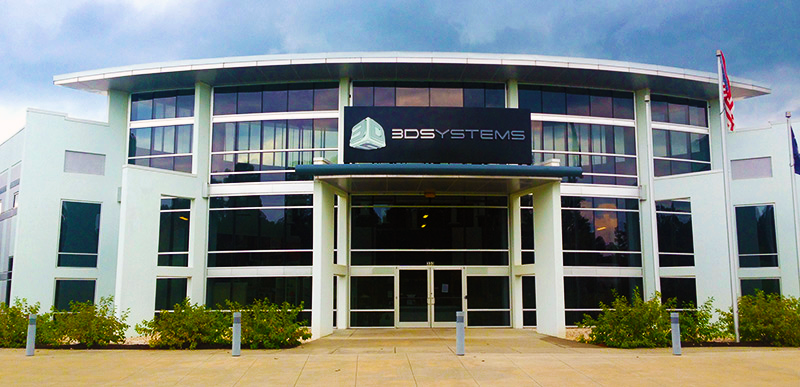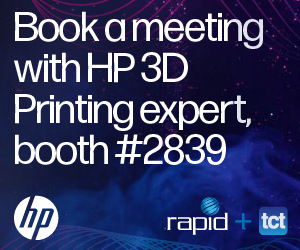Just as Stratasys began to enter onto 3D Systems’ home turf, now, 3D Systems (NYSE:DDD) is pulling its own such move with the introduction of a fused filament 3D printer, the Roadrunner. Developed in collaboration with contract manufacturer with Jabil Inc. (NYSE:JBL), Roadrunner relies on what the partners call High Speed Fusion (HSF). They claim that “[t]hrough the use of advanced electric motion control, this unique system operates at speeds and precision levels well beyond current state-of-the-art production platforms” and that it features “temperature capability and available build areas greater than those of competing systems.” With it, 3D Systems and Jabil are targeting the aerospace and automotive sectors.
“By introducing our High Speed Fusion filament printer, 3D Systems will build on the organizational focus that we adopted in 2020, and expand our presence in growing markets that demand high reliability products such as aerospace and automotive,” said Dr. Jeffrey Graves, president and CEO, 3D Systems. “Our investments in this solution, and collaboration with Jabil, will allow our customers to increase productivity and performance by using additive manufacturing with a hardware, software, and materials platform that is uniquely designed for the rigors and requirements of an industrial setting. The value proposition, which we believe is compelling, will open new markets for our company that are estimated to be over $400 million, with the promise of new markets, beyond these current opportunities, as the economics of this new technology platform are fully demonstrated.”
3D Systems claims that the new machine, of which no pictures have yet been released publicly, will have the “[h]ighest deposition rates combined with the best dimensional precision of any standard industrial class of fused filament platform. It is also said that the system will have the “lowest landed part cost” and the ability to 3D print with high-temperature materials, such as ULTEM and carbon fiber reinforced nylon, as well as general use filaments including ABS and PETg ESD.
Roadrunner is capable of 3D printing end parts for aircraft interiors and ducting, drones, under the hood and dash of vehicles, and general industrial uses. This is in addition to tooling and fixtures, as well as prototypes.
“We are proud of the progress the Jabil and 3D Systems teams have made and the ability of this solution to overcome the historical system and sub-system level limitations of current market offerings,” said John Dulchinos, vice president, 3D printing and digital manufacturing, Jabil. “Jabil understands the needs of a large-scale manufacturing environment and we look forward to continuing to collaborate with 3D Systems to make this new system available to the marketplace while also using it within our own factories.”
This is indeed an exciting time for industrial 3D printing. The last time that 3D Systems had an extrusion-based system was its consumer-directed Cube line, which was scrapped in 2015 with the entirety of the company’s consumer division. Now, apparently the company is re-entering this segment with a focus on industrial applications.
No specifications have been released, but the Roadrunner sounds big and fast, bringing to mind machines like the Big Area Additive Manufacturing (BAAM) system from Cincinnati Inc., or its competitors. However, in this case, the system prints with filament, rather than plastic pellets, which seems counterintuitive for fast processing. Many in the industry have said that pellets are the future, as it may be easier to begin working with material already available for the injection molding world. Joshua Pearce at Michigan Tech also makes the point that directly recycled material can be used more easily via pellet extrusion, as it bypasses the step required to process plastic waste into new filament.
The 3D printing industry is in the midst of an interesting transformation. Specifically, Stratasys is now manufacturing stereolithography (SLA) 3D printers via it acquisitions of Origin and RPS. This was 3D Systems’ territory, as 3D Systems invented SLA in 1984. Now, 3D Systems is taking Stratasys at its own game of material extrusion. Meanwhile, Desktop Metal and EnvisionTEC are under one umbrella. Interestingly, Executive Editor Joris Peels just mentioned that someone like Jabil might begin manufacturing their own 3D printers.
This is a time of mergers, acquisitions and other surprises. What will happen next? In the meantime, we will surely learn more about Roadrunner in the near future. The partners have been developing this platform for over a year and will aim to begin shipping Roadrunner in 2022.
Subscribe to Our Email Newsletter
Stay up-to-date on all the latest news from the 3D printing industry and receive information and offers from third party vendors.
You May Also Like
Anatomy of an AM Accelerator: Brookings’ South Kansas Advanced Manufacturing Case Study
The Brookings Institution, long one of America’s most prestigious think tanks, has released a case study titled, “Expanding South Kansas’ aerospace cluster into a resilient advanced manufacturing sector.” In the...
3D Printing, China, and the Struggle to Produce Exactly Enough
Global supply chains have demonstrated an almost eerie resilience in the face of one ongoing crisis after another in the last half a decade. Still, one often gets the feeling...
3D Printing News Briefs, May 25, 2024: 3D Printed Medical Models, Sensors, Engines, & More
We’re starting with research in today’s 3D Printing News Briefs, first about filament diameter-adjustable 3D printing and then about 3D printed sensors. Then, we’re moving on to personalized 3D printed...
Navy’s Afloat Additive Manufacturing Program Creates Scalability Model for 3D Printing Industry
A story published this week in National Defense spotlights a new Department of Defense (DoD) program of record (PoR) for fiscal year 2024, the Navy’s Afloat Additive Manufacturing (AM) Program....


































